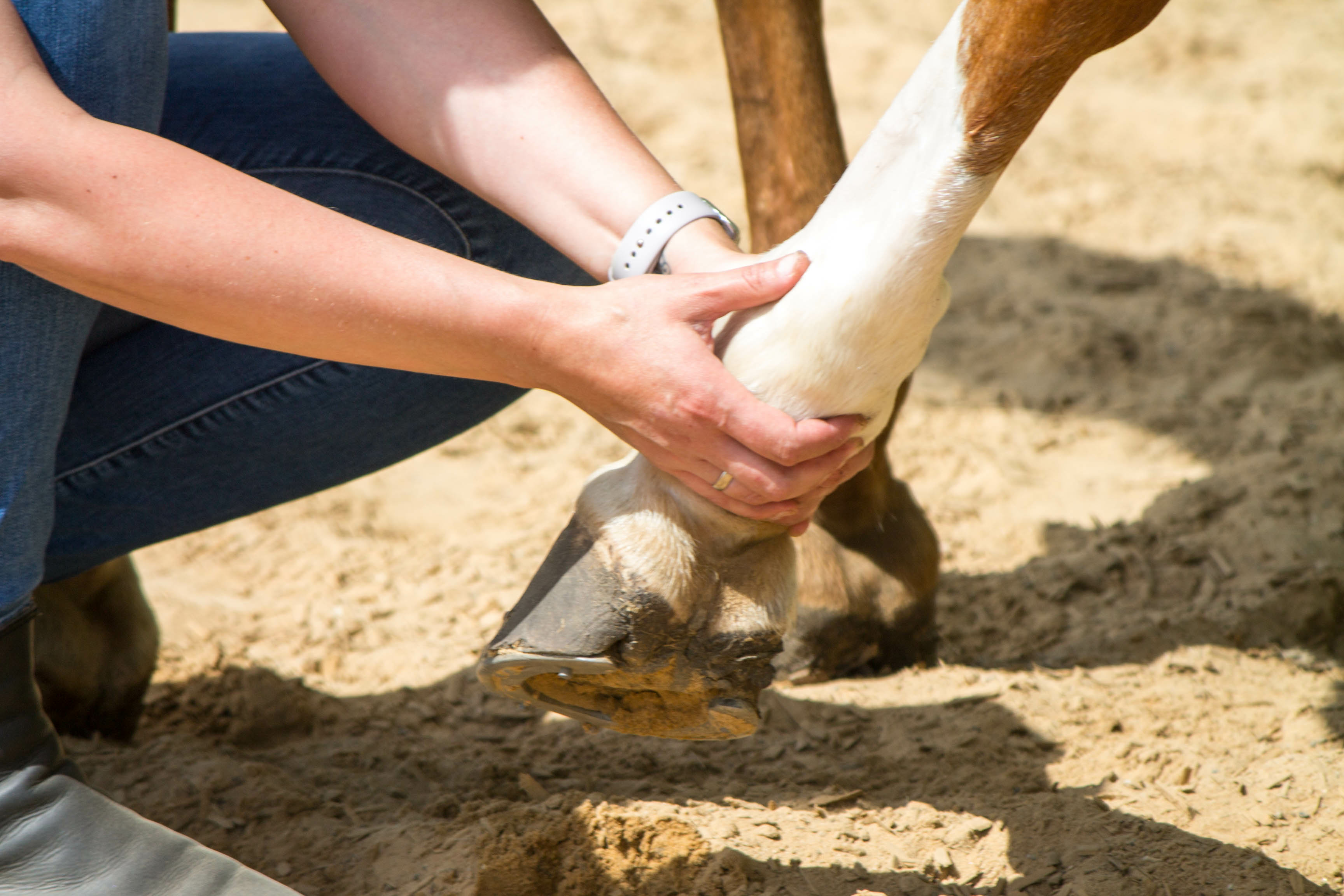Home > Horse Care > When to use hot vs. cold therapy on equine injuries
When to use hot vs. cold therapy on equine injuries
Deciding whether to use ice or heat on an equine injury depends on many factors. Here's a quick guide to when and why each therapy is most effective.
- May 2, 2024
- ⎯ Equus
COLD THERAPY

- When it’s needed: Use when an injury is fresh–less than 36 hours old.
- Why it helps: During this time, damaged blood vessels beneath the skin are hemorrhaging, leading to inflammation and bruising. You’ll know you’re in that window because the injury site is tender and shows diffuse swelling. During this time, cold therapy will decrease the permeability of the blood vessel walls, slowing the leaks and keeping healthy, undamaged tissues from “drowning” in excess fluids. Water may be the easiest option for cooling an injury site, but it will not be cold enough on its own. You’ll need to use ice, a commercial cold pack or another cooling system.
- Schedule: Apply cold therapy for 10 to 20 minutes at a time and allow at least 30 minutes between treatments to prevent damage to tissues. Repeat the cycle as often as you can, but you’ll need four or more sessions per day to really see results. Continue cold therapy until the area no longer swells between treatments.
Click here to learn what noisy joints may mean.
ALTERNATING HOT AND COLD THERAPY
- When it’s needed: When a healing injury is less painful to the touch and the swelling has more distinct edges. At this stage, any palpable lump will be firmer, feeling like a peeled hard-boiled egg.
- Why it helps: Alternating hot and cold therapy encourages the body’s natural “cleanup crew” of white blood cells and natural chemicals that engulf and destroy dead cells and other physiological debris. The application of heat speeds circulation to the area, while cold will restrict it. Alternating the two creates a “pumping” action that speeds healing. Too much hot therapy, however, can cause hemorrhaging to begin again, so hold off on moving to this therapy for a day or two if you’re unsure of the wound’s status.
- Schedule: Begin by applying heat, 10 minutes at a time increasing to 20 minutes over a few days. After each heat session, apply cold therapy for 20 minutes. Repeat this at least four times a day until there is no localized swelling around the injury.
HEAT THERAPY
- When it’s needed: When there is no pain associated with the injury and only minor swelling remains.
- Why it helps: Heat supports the final stage of healing, when the body is actively replacing cells and repairing tissues with specialized cells delivered via the bloodstream. Applying heat at this point boosts circulation to the area, speeding the cleanup.
- Schedule: Apply heat therapy for 20 minutes at a time, with at least 20 minutes of rest between treatments. Of course, never apply anything to your horse’s skin that is uncomfortably hot to your own touch.
Don’t miss out! With the free weekly EQUUS newsletter, you’ll get the latest horse health information delivered right to your in basket! If you’re not already receiving the EQUUS newsletter, click here to sign up. It’s *free*!








